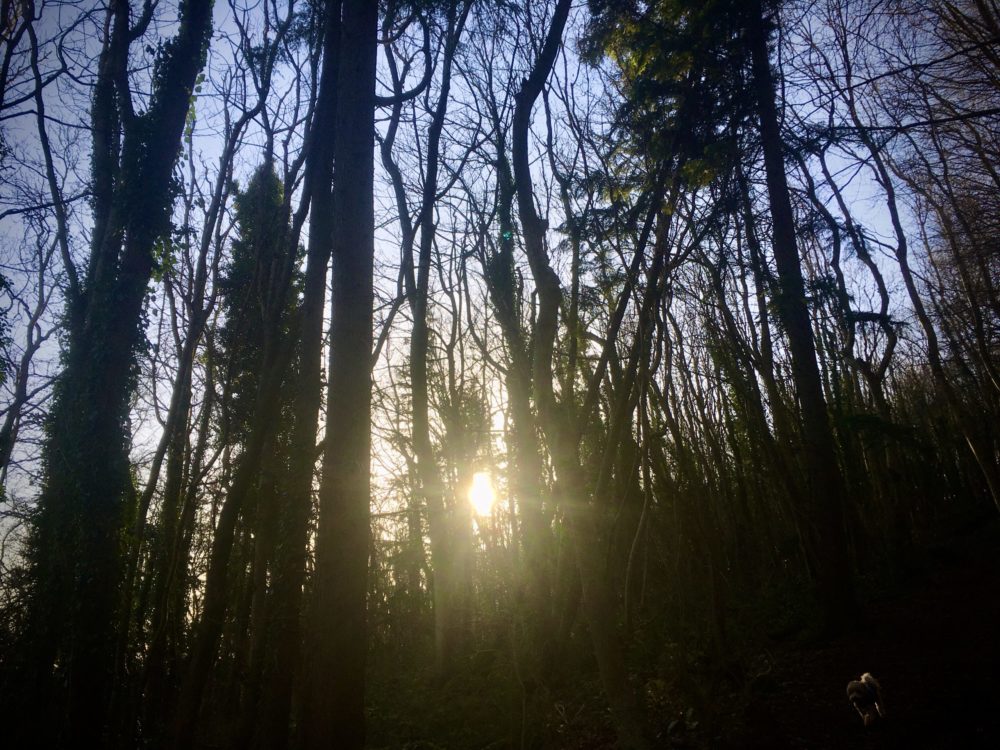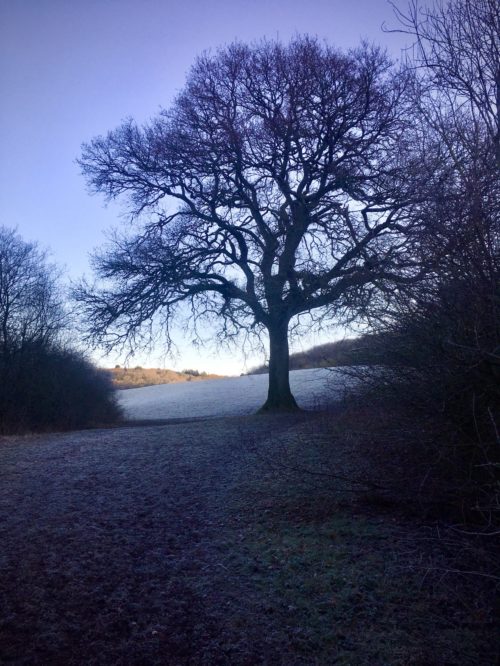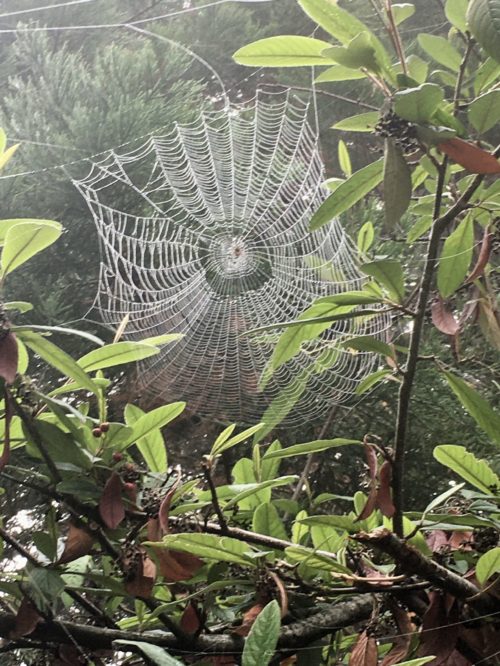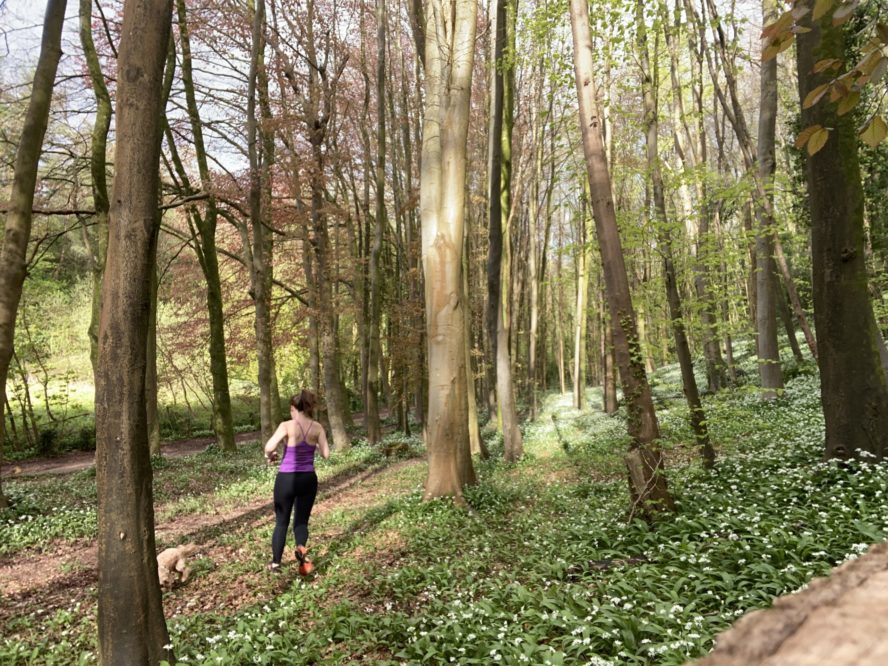The Whisper-Syncing of Trees: Cwm George & Casehill Woods

Tori Chamberlain
Trees talk. They really do chatter! This isn’t a woo-woo thing. Nope — it’s much better than that.
In the ancient mud soils, mother trees nurture young saplings by sharing carbon and nitrogen through mycorrhizas: a network of tree roots and fungi.
The trees off-load as a survival tool, or a form of code that protect against disease and disaster; and these buried whisperings sync veteran and sapling with warnings of electric storms, thirsty droughts and other calamities.
Like a fully functioning human family, there’s a continuous flow of nourishment, care, and perhaps even love.
The semi-ancient broadleaved woods near my home are one of the largest and oldest habitats in the Vale of Glamorgan of mother oaks, oceanic ashes, rare Atlantic hazels, field maples, wild cherry, elm, and rowan trees, alongside a more recent addition of stoic beech trees arching in unison – a wind tunnel, or a sea passage calling us home.
The trees of Cwm George and Casehill know all in their magnificence, and I am held close every time I enter their woody realm.
This diverse collection of woodlands house hundreds of years of established ecosystems — once lost, these ancient sites can’t be recreated.
To live alongside such majesty gives us a responsibility to care and look after, to give back what they give to us…to me.
This powerhouse of wooded lungs sits just a few miles from the Bristol Channel between my village and the city of Cardiff.

At dawn, the overstory stands tall and waits for soupiness to clear. At about a hundred steps away, along the pavement of my street and through an open upstairs window, I wait in my three-bed semi.
From blurry sleep, I smell the undertones of earthiness, and decide on whether it is a wellies day or running shoes day. Both pairs of footwear sit by the front door hoping to be chosen; a dog lead hangs expectantly on the hook.
Overnight and into daybreak, the wood-wide-web of mycorrhizal networks streamed reassurances from tree to tree, and I think of a friend a long way away, tapping on WhatsApp — he knows I love words, but forgets, always forgets, I need IRL too!
Text messaging, well…it gives a false sense of intimacy, doesn’t it?
I need my woods. Every day I am called to them. They are not only part of my geographic landscape, but they are part of my inner landscape too, and I hear their words in the rumblings of the earth.
A different friend, one who is learning to become a meditation teacher, walked with me in Cwm George two summers ago.
We sauntered beneath the canopy of rare small-leaved limes, across the upright rollings of wild garlic, beside the canyon-like gorge — too canyon-like, I think, for a village in the Vale; but on its cliff-sides are Welsh polypody, first discovered in 1668.
It’s now the only known location for this plant in the wild — this gorge, and the polypody, at the end of my unsuspecting street — nearby Cardiff commuters yawn and Nisa opens its doors.
My mindful friend — she heard them too — the whispering gurgles beneath our feet, and she told me about the Japanese practice of forest bathing. But I had to tell her I wasn’t really doing any of that.
I wasn’t, for the most part, being mindful. I wasn’t engaging in the practice of walking slowly and allowing my body to guide me, as forest bathing practitioners are said to do.
Instead, I have my own well-trodden paths in these woods because I like the reassurance of familiarity and routine.

I like to see the same things change: the tightly coiled fiddleheads of spring unfurling their fluffed-out fronds little by little.
I like to feel the mud after the rain squelch around my boots, and then its unyielding rigidity on a frozen January morning. I like the way the autumn spider adds an extra strand of silk each day; and I like to see my dog’s cocked head as he anticipates the chase and tease.
Sometimes I give a self-piteous wail, a kick at a stone, and clench my white-knuckled fists in my pockets until my nails almost break the skin of my palm — echoes from the gorge, and damp eyes like forest dew refracting light dapples: komorabi, the Japanese call it…I skirt around the loss I do not want to feel.
None of this is mindful!
Yet, however we behave — my little dog and I — the trees continue to emit their tenderness.
I enter the understory of their home every day, every year, and immerse myself in fulfilment and the necessity of IRL, as well as empathy circulating beneath my feet.
They tell me I’m magnificent, and I know external validation isn’t usually healthy, but I take it from my peaceful giants, for in their presence, ego dissolves.
The self becomes the whole, and their compassionate flow streams outward…I download every time.

I spent time reading about tree intelligence because I had to learn why my daily jaunts had become essential to my routine and helped me heal from a person who offered no safety. I wanted to know why the trees gave me what he could not.
And as I merged with all that surrounded me, I grew in an awareness that I no longer needed an outside crutch because I was holding whispering forests within.
I’m using photosynthesis, and tomorrow my WhatsApp friend will walk here, alongside me, beneath the canopy of ancients and new — and his phone will be silent and, importantly, he’ll leave it at home.
Support our Nation today
For the price of a cup of coffee a month you can help us create an independent, not-for-profit, national news service for the people of Wales, by the people of Wales.





If Ivan Shishkin had visited Cymru he would never have left…
The small leafed branches communicate between themselves by semaphore and shrews and mice twitch their curtains at each other…